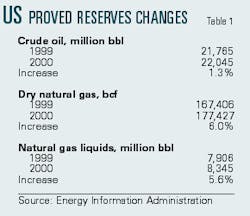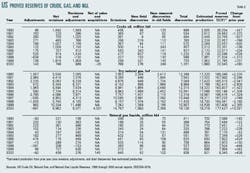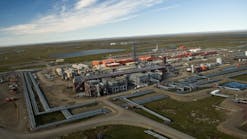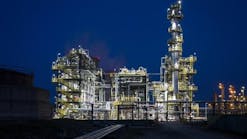US crude oil, natural gas, and natural gas liquids proved reserves all increased in 2000, with natural gas increasing a record 6% to 177,427 bcf, the US Energy Information Administration said earlier this month.
The dry gas reserve additions were the largest since EIA first began compiling the report in 1977.
However, officials cautioned that such an unusually large increase may not necessarily repeat itself. EIA cited two major reasons for this: first, the number of frontier areas is diminishing and second, the unusual combination of a large increase in the number of exploratory wells and a large increase in total discoveries per exploratory well is unlikely to occur very often in the future because an increase in the number of exploratory wells usually decreases discoveries per well.
"Anytime you're having a great run with a play, eventually it comes back down," noted John Wood, director of EIA's reserves and production division.
Wood said last year's higher prices helped encourage reserve numbers "but they weren't critical." He also attributed some effect to improved technology that allows producers to be much more efficient choosing, drilling, and extending individual wells.
Reserves additions last year replaced 152% of US dry natural gas production. Most of the gas proved reserves additions came from Texas and New Mexico in the Southwest, and from states with large coalbed methane reserves like Wyoming, Colorado, and Utah.
"Coalbed methane is an important frontier area for US producers," Wood said.
US natural gas proved reserves have increased in 6 of the last 7 years. Natural gas liquids reserves increased in proportion with natural gas reserves.
Total US crude oil proved reserves increased about 1% to reach 22,045 million bbl.
Crude oil reserves additions replaced 115% of oil production. The majority of crude oil proved reserves additions came from federal offshore leases in the Gulf of Mexico deep water. Large total discoveries of crude oil in 2000 also came mainly from the deep water and from the Alaskan North Slope. Both provided very high discoveries per exploratory well, EIA said.
Proved reserves are the estimated quantities that geological and engineering data demonstrate with reasonable certainty to be recoverable in future years from known reservoirs under existing economic and operating conditions. Petroleum engineering and geological judgment are required in estimating proved reserves; therefore, the results are not precise measurements. EIA has conducted the survey for 24 years.
Data elements added to the report this year also gave the agency better insight into what impact, if any, the wave of sales and acquisitions by majors and independents had on US proven reserves.
Wood said EIA found the amount of actual barrels lost through consolidation was only 20 million bbl. He said that was statistically small given the amount of barrels in play last year was 5 billion bbl.
A longer and more comprehensive version of the annual report will be out next month, Wood noted.




